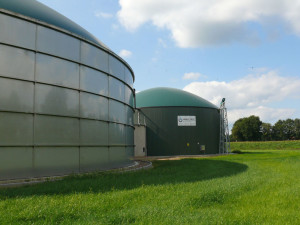
Biogas is a diverse energy source, suitable as a flexible and storable energy form. Between 2000 and 2013 the production of biogas in Europe increased six fold, from 2.2 to 13.5 Mtoe, with the main producers being Germany, UK and Italy, followed by Czech Republic, France and the Netherlands. Biogas is also expected to play an important role in reaching the European energy policy targets for 2020 and 2030. Today agricultural biogas is mainly produced using energy crops such as maize or sorghum, oftern in co-fermentation with animal waste, however the use of energy crops for biogas has been questioned lately due to sustainability concerns. Therefore, introducing new, cost-competitive and sustainable feedstock such as manure, straw and even grass, will be increasingly important for the biogas sector to deliver its full potential in the future energy scenario.
Researchers from Aalborg University in Denmark have mapped the potentials of animal manure, cereal straw and grass from both rotational and perennial grasslands for biogas production in the EU by 2030. By using official Eurostat statistics and assuming different utilization scenarios for each resource, the study identified a total energy potential from all these resources ranging between 39.3-66.9 Mtoe. This amount could cover 2.3-3.9% of the total EU energy consumption or 8.4-14.3% of the total supply of renewables in 2030.
Results in detail
Manure: the total energy potential for anaerobic digestion of the available manure from cattle, pigs and poultry in Europe in 2030 was estimated to be 20.83 Mtoe, with pig manure amounting to 9.66 Mtoe, cattle manure 9.22 Mtoe and poultry manure 1.92.
Grass: With almost 11 million hectares of rotational grasslands cultivated in 2013, the energy potential available for anaerobic digestion ranges between 1.05 and 5.90 Mtoe. Although the current share of grass utilized for biogas production is unknown, grass is already used in Germany for anaerobic digestion. The potential of permanent grasslands and meadows was estimated between 2.60 and 12.11 Mtoe. Utilising grass from permanent grassland and meadows would be particularly interesting as it would be a method for protecting biodiversity while producing renewable energy and recirculating nutrients from permanent grasslands to cultivated lands via the application of digestate to these areas.
Straw: The agricultural land used for cereal production in Europe is estimated in 48.7 million hectares by 2030. Straw can be a suitable substrate for anaerobic digestion, however mechanical, thermochemical or biological pre-treatment is needed to reduce the the digestion retention times of straw compared to other substrates, in order to maximize its methane yield. Cereal straw from cereal production could provide a biogas potential raging between 14.76 and 28.02 Mtoe. Although this reflects a high variability, even the lowest estimate could represent a significant amount of biogas, comparable to the total European biogas production registered in 2013.
In total the energy potential from these resources ranges between 39.25 and 66.85 Mtoe, depending on the availability of the residues. If this amount is added to the current biogas production, the total energy potential reaches 52.75-80.35 Mtoe. This means as much as 11.3 to 17.2% of the total supply of renewables projected by 2030. If the consumption of natural gas in the EU in 2030 stays within this range, the projected biogas deriving energy yields from the investigated resources could replace ≈9- 16% of the total consumption of natural gas.
This post is based on an the paper “The Potential of Animal Manure, Straw and Grass for European Biogas Production in 2030” by Meyer, A. K; Ehimen, E. A. Holm-Nielsen, J. B, Aalborg University, Denmark and presented at the 24th European Biomass Conference and Exhibition.


